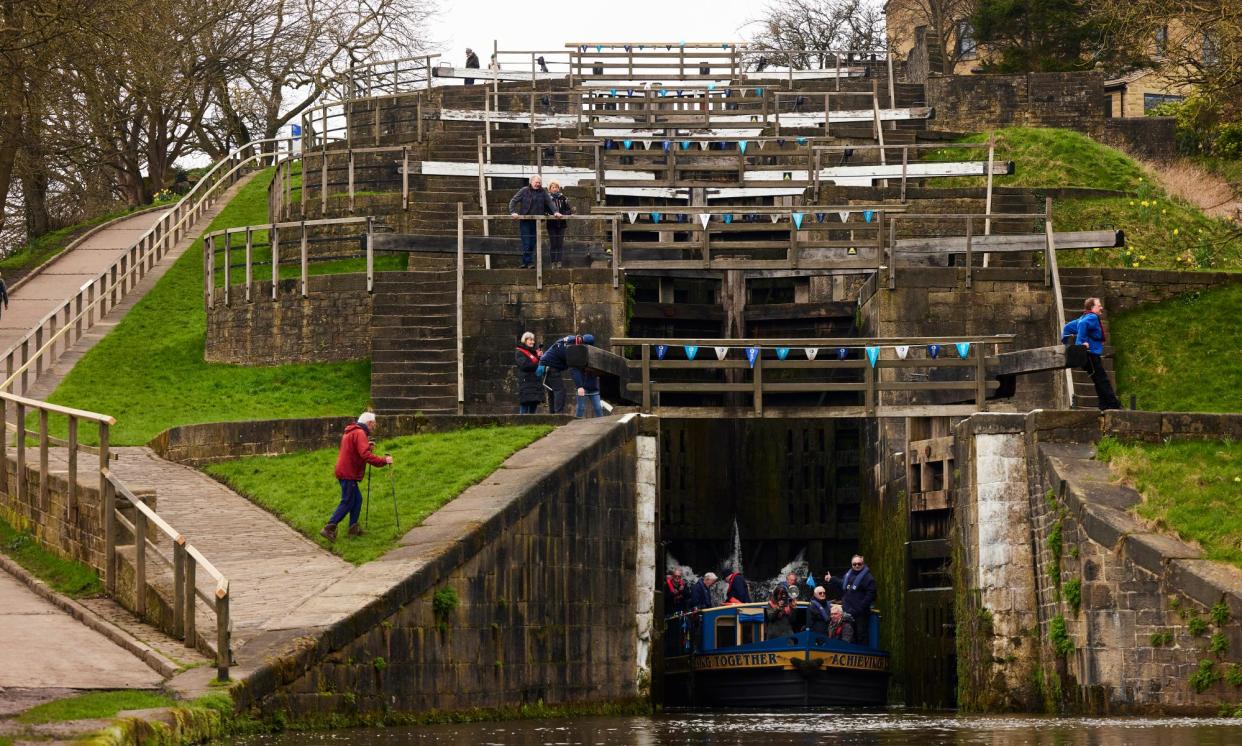UK’s steepest lock flight marks 250th birthday amid canal funding fears

For people who like their thrills gentle, safe and at never more than three miles an hour, Bingley Five Rise locks is quite a rollercoaster ride.
The canal lock flight in West Yorkshire, the steepest in the UK and a true wonder of the nation’s waterways, will this weekend celebrate its 250th birthday.
When it opened in 1774, about 30,000 people gathered awestruck to watch the first boats make the 60ft descent through the five linked locks.
There will be events marking the anniversary on Saturday, and genuine pride that such an incredible feat of engineering is still in use today.
“We are so proud of it,” said Sean McGinley, a regional director of the Canal & River Trust. “It should be in a museum really. It is sort of mad but it’s wonderful. The fact that boats still go through it after 250 years, in pretty much the same way they always did, is outstanding.”
Behind that pride and joy are concerns that canals in England and Wales could be in peril. The trust was told last July that it would get less money from the government, a cut it equates to 40%.
It felt like “a kick in the shins,” said McGinley. There was a real chance Britain’s canal system could in future years see Beeching-style cuts, he said
“We have got to get this into the minds of the public because once a canal is gone, it’s gone … it’s gone for ever. We have to treasure them and look after them because if we lost things like Bingley Five Rise it would be horrendous for the nation.”
Britain’s canal system relies on the work of countless volunteers and McGinley that could only go so far. “If there’s not enough money coming in, it doesn’t matter how many volunteers we have. We will be closing locks, we will be closing canals, because we can’t afford to keep them open.”
It is not just boat users who enjoy the 2,000 miles of canals and rivers in the trust’s network, there are also about 10 million people a fortnight enjoying walks, jogs and bike rides along the towpaths.
“If people just gave us 10p each, there wouldn’t be a problem at all,” McGinley said.
The locks at Bingley are considered one of the greatest feats of canal engineering of their day and are Grade I-listed, the same as York Minster and Buckingham Palace. They sit on the Leeds to Liverpool canal, once one of England’s most important transport routes.
Ruth Garratt, a heritage adviser to the trust, said the locks were hung on the side of a hill to avoid other more expensive options. “They were keeping a very close eye on construction costs, to the penny. This was the most economical way of getting up and over what is an incredibly steep incline,” she said.
The penny pinchers were 18th-century Bradford wool merchants, and the man responsible for the locks was Halifax-born John Longbotham.
Garratt would love for him to be better known. Longbotham dedicated his life to the Leeds-Liverpool canal, she said, but when economic factors halted canal building in the late 1770s he lost his income and plummeted into poverty. He died penniless.
“It is such a sad story but it is also the story of the boom and bust of the Enlightenment era,” said Garratt, one with parallels today. “There was a cost of living crisis, wars abroad … there were winners and losers.”


